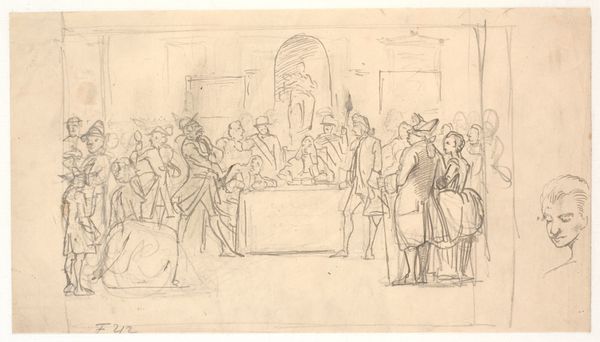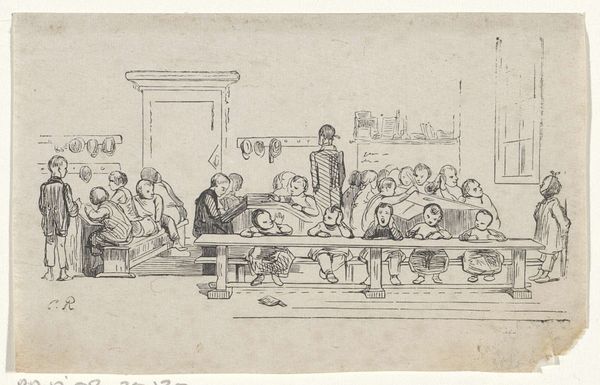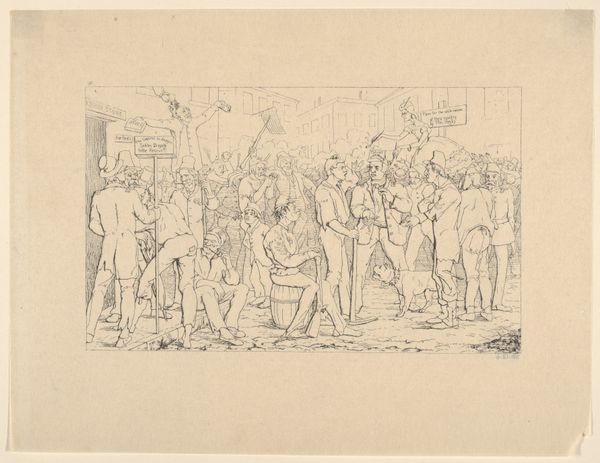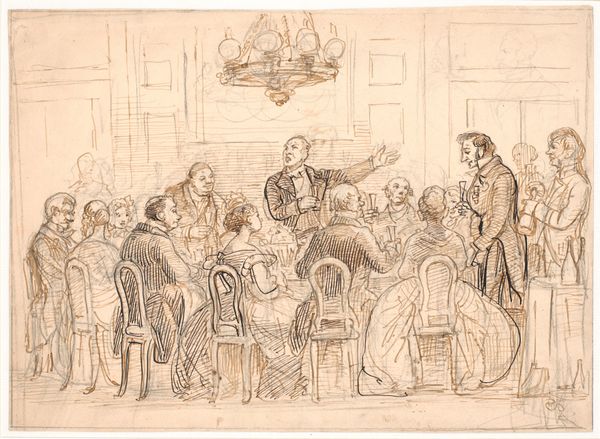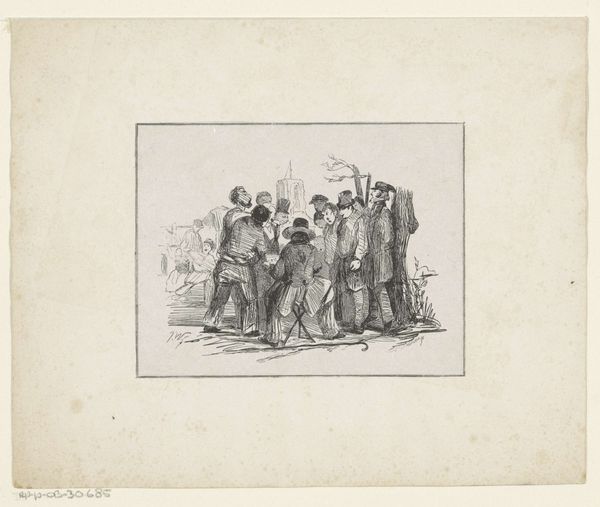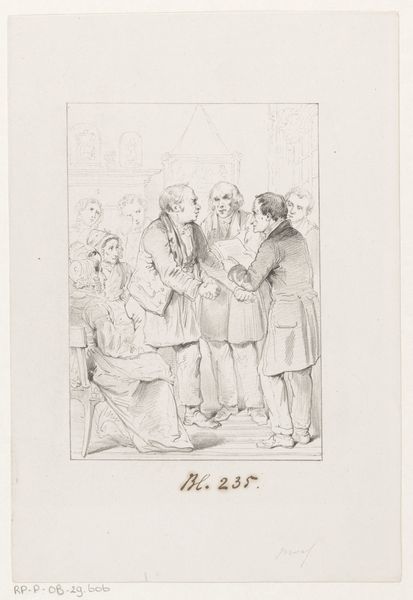
Vergadering van koffiemakelaars in de Brakke Grond te Amsterdam, 1820 1820
0:00
0:00
drawing, pencil, pen
#
portrait
#
drawing
#
light pencil work
#
quirky sketch
#
pencil sketch
#
personal sketchbook
#
idea generation sketch
#
sketchwork
#
romanticism
#
pen-ink sketch
#
pencil
#
sketchbook drawing
#
pen
#
genre-painting
#
fantasy sketch
#
realism
#
initial sketch
Dimensions: height 390 mm, width 495 mm
Copyright: Rijks Museum: Open Domain
Julianus Antonius Heintzen created this drawing, "Vergadering van koffiemakelaars in de Brakke Grond te Amsterdam," around 1820. The sketch depicts a meeting of coffee brokers, a scene that offers us a glimpse into the economic and social structures of 19th-century Amsterdam. It is impossible to ignore that this seemingly simple image of commerce is deeply entangled with colonialism and the exploitation of labor. The coffee trade, which brought wealth to Amsterdam, relied on the labor of enslaved and exploited people in coffee-producing regions. This reality is conspicuously absent from Heintzen's depiction, which focuses instead on the prosperity and civility of the Dutch merchants. The gathering in the Brakke Grond becomes a symbol of the complex relationship between commerce, colonialism, and representation. How do we reconcile the intimacy and immediacy of this sketch with the larger, often brutal, history of the coffee trade that made such meetings possible?
Comments
No comments
Be the first to comment and join the conversation on the ultimate creative platform.
